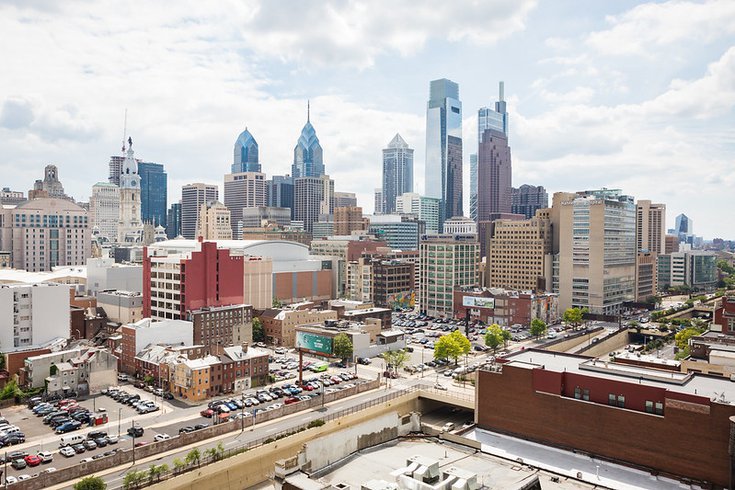
August 13, 2021
 Thom Carroll/for PhillyVoice
Thom Carroll/for PhillyVoice
The population of Philadelphia and surrounding counties grew in the last decade, according to new data released from the U.S. Census Bureau.
Philadelphia remains the sixth-most populous city in the United States, but saw an influx of nearly 78,000 residents over the last decade that put the population at more than 1.6 million for the first time since the 1980 U.S. Census.
Findings from the 2020 U.S. Census released on Thursday show Philadelphia's population grew about 5.1% since the last decennial census in 2010.
The population of Philadelphia has been rebounding since it began to decline from a peak of about 2 million in 1950, with the steepest drop-off coming between 1970 and 1980. In the 2010 Census, Philadelphia's population stood just over 1.52 million, where it roughly had stabilized in recent decades. The city's population was about 1.68 million in 1980. 1.58 million in 1990 and 1.51 million in 2000.
The counties surrounding Philadelphia also saw population growth over the last decade, led by Montgomery County (856,553) and Chester County (534,413) with 7% increases each in the 2020 Census. Bucks County (646,538) and Delaware County (576,830) each saw a population increase of 3%.
In Pennsylvania as a whole, the state's population grew by about 300,000 people, surpassing 13 million but only increasing by a rate of 2.4% over the last decade. While population centers like Philadelphia saw higher rates of growth, only 23 of the state's 67 counties gained in population. Pennsylvania will lose one of its 18 Congressional seats and will lose one of its 20 Electoral College votes.
In New Jersey, the state's population rose 5.65% over the last decade to 9.28 million, with gains in larger counties including Bergen, Hudson and Essex counties. The state will keep its 12 seats in the U.S. House of Representatives and its 14 Electoral College votes.
In South Jersey, the population of Camden County (523,485) grew by 2%, Burlington County (461,860) by 3% and Gloucester County (302,294) by 5%.
The nation’s overall population grew by 7.4% to 331.4 million between 2010 and 2020, which is among the slowest rates of growth on record. Only the 1930s saw a slower growth rate. Most of the population growth was concentrated in metro areas, particularly in the South and Southwest, and half of all U.S. counties saw their populations decline.
Across the United States, the 2020 Census also found significant multiracial population growth and a decline in the nation's white population for the first time on record. Notably, the number of people reporting multiple races, instead of one race, grew from 2.9% of the U.S. population in 2010 to 10.2% of the population in 2020, about 33.8 million people.
Some of that change has been attributed to improvements in how the Census Bureau collects data on race and ethnicity.
"The improvements we made to the 2020 Census yield a more accurate portrait of how people self-identify in response to two separate questions on Hispanic origin and race, revealing that the U.S. population is much more multiracial and more diverse than what we measured in the past," said Nicholas Jones, director and senior advisor for race and ethnicity research and outreach at the Census Bureau.
The white, non-Hispanic population, without another race, decreased by 8.6% over the last decade and the U.S. as a whole is now 57.8% white, 18.7% Hispanic, 12.4% Black and 6% Asian.
The white population remained the largest race or ethnicity group in the United States, with 204.3 million people identifying as white alone. Overall, 235.4 million people reported white alone, or in combination with another group. The population identifying as white alone decreased by 8.6% since 2010.
In Philadelphia, both the Black and white populations declined since 2010, while the population of Hispanic and Asian residents each increased.
"After decades of decline through the end of the 20th century, Philadelphia has seen consistent population growth for nearly two decades now, showing that our great city is a place where people want to live, work and raise a family," Mayor Jim Kenney said Thursday. "A good deal of that growth has come from immigrants and their families who have chosen to call Philadelphia home, enhancing the fabric and cultural vibrancy of our communities. We are — and always will be — a proud welcoming city."